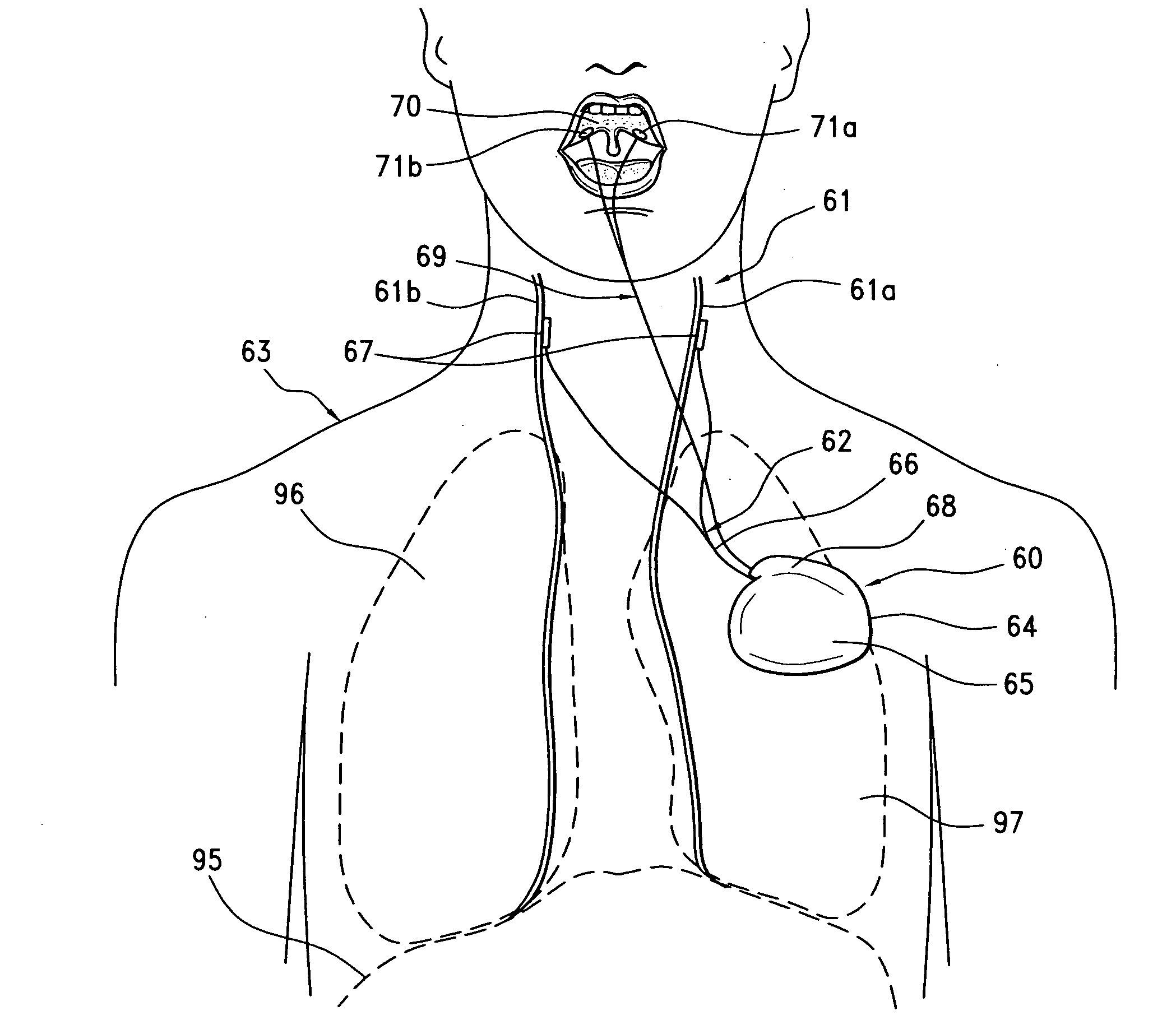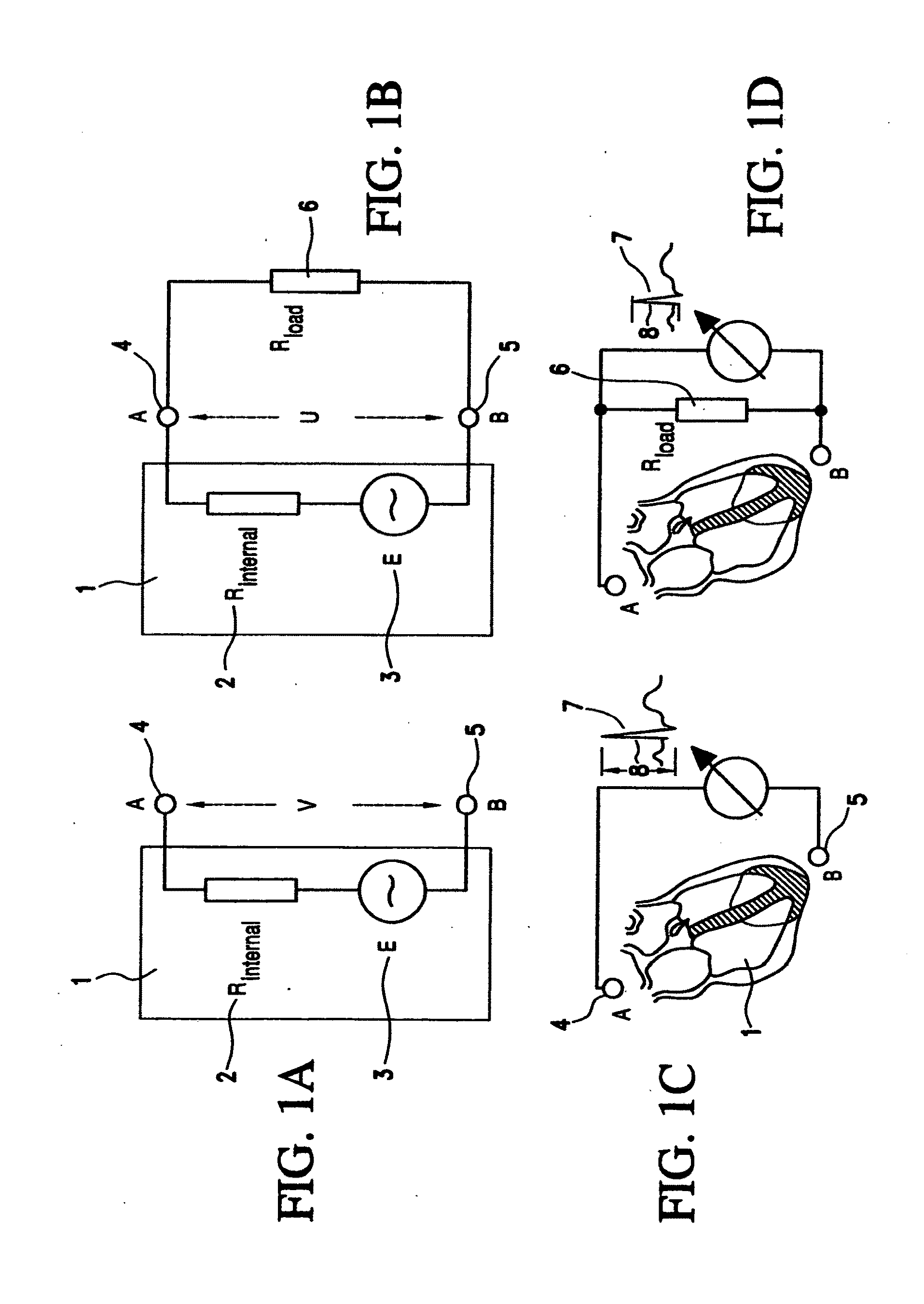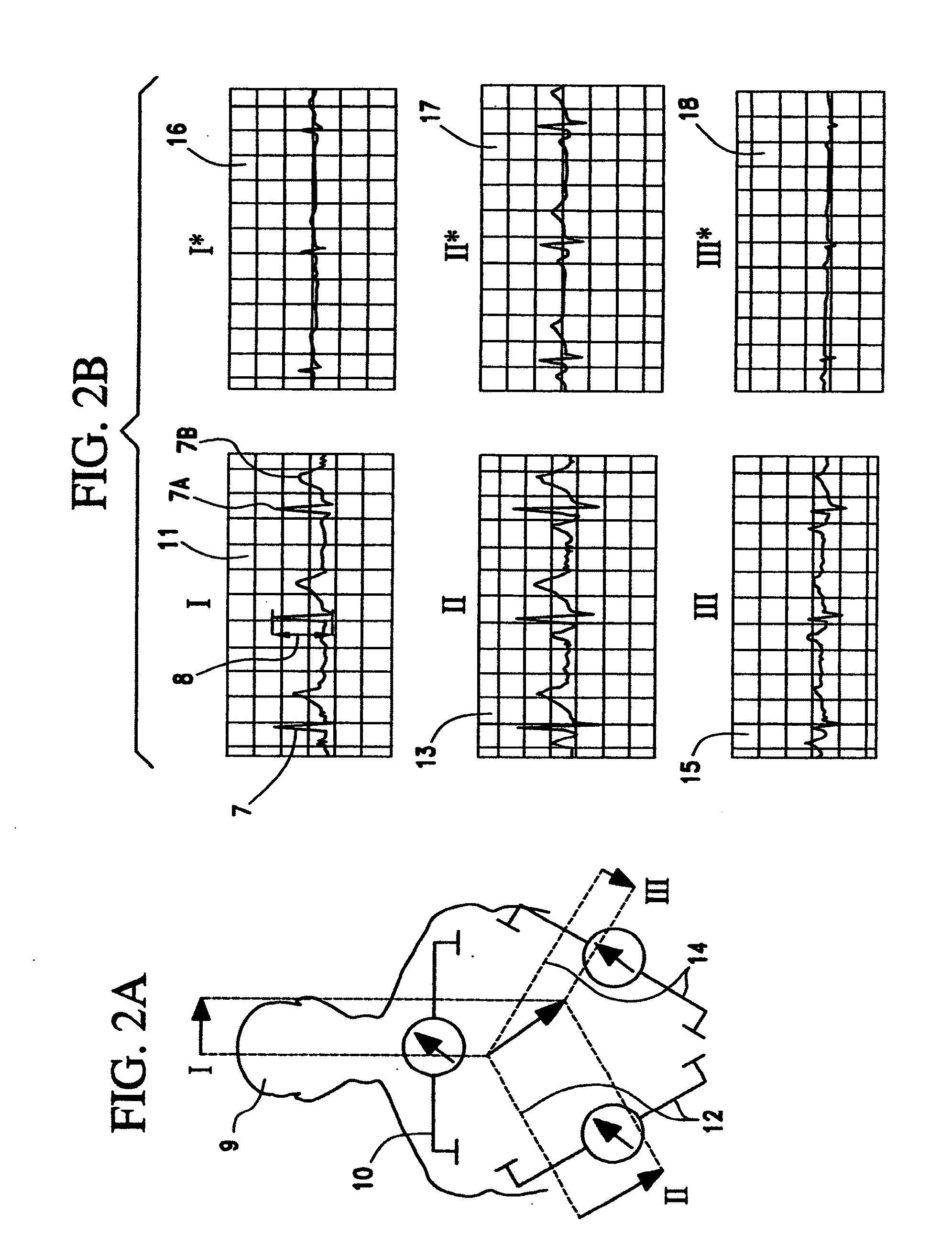Method of detecting sleep apnea and treatment thereof
a technology of sleep apnea and detection method, which is applied in the field of improving the treatment method of patients diagnosed with sleep apnea, can solve the problems of frequent disruption of sleep, inability to generate normal nerve signals, and individual death from lack of oxygen
- Summary
- Abstract
- Description
- Claims
- Application Information
AI Technical Summary
Benefits of technology
Problems solved by technology
Method used
Image
Examples
Embodiment Construction
[0039]As is known, a patient's EKG can be derived from the skin surface of the patient, and represents a voltage (a cardiac signal) generated by the heart. This voltage may be derived by means of electrodes which are adhered to the skin of the patient. Use may be made of different leads, with bipolar electrodes for example between the right arm and the left arm, in the way that the resulting voltage change between these two electrodes represents the main vector of the heart in projection to those leads. Therefore, the amplitude is a measurement of the voltage generated by the heart and the vector. The input impedance of an external EKG machine is standard in a range between 1-10 megohms. This means that the input impedance and resistance of such an amplifier is very high and therefore no current is shunting through the machine and the voltage always represents the maximum voltage generated from the energy source, namely the heart. Differences in voltages with the current EKG measure...
PUM
 Login to View More
Login to View More Abstract
Description
Claims
Application Information
 Login to View More
Login to View More - R&D
- Intellectual Property
- Life Sciences
- Materials
- Tech Scout
- Unparalleled Data Quality
- Higher Quality Content
- 60% Fewer Hallucinations
Browse by: Latest US Patents, China's latest patents, Technical Efficacy Thesaurus, Application Domain, Technology Topic, Popular Technical Reports.
© 2025 PatSnap. All rights reserved.Legal|Privacy policy|Modern Slavery Act Transparency Statement|Sitemap|About US| Contact US: help@patsnap.com



